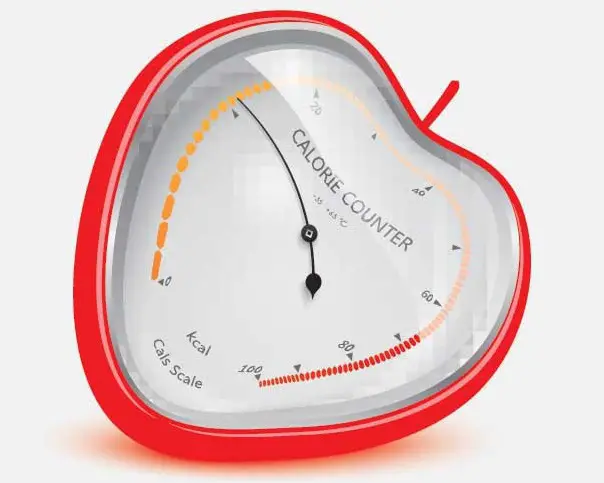A calorie is the amount of energy required to heat up one kilogram of water by one degree Celsius.
The calorie count of various foods is simply letting you know how much potential energy the foods contain, as some foods are more energy dense than others.
The History of Calorie Counting
Calorie counting has been there from time immemorial. The idea became popular around the turn of the 20th century, according to Jonny Bowden, Ph.D, CNS, a board-certified nutritionist and author of Living the Low Carb Life: Choosing the Diet that’s Right for You from Atkins to Zone, and The 150 Healthiest Foods on Earth: The Surprising, Unbiased Truth About What You Should Eat and Why.

At that time, scientist Wilbur Atwater noticed that if you put food in a machine, called a “bomb calorimeter,” and burned it, you could measure the ash and heat to find out how much “energy” was released and therefore how much “energy” was in the food.
The idea caught on, and people began counting calories i.e. calculating exactly how many calories were consumed when eating particular foods, and “burned” when engaging in different activities.
Despite all the diet strategies out there, weight management still comes down to the calories you take in versus those you burn off. If you are trying different ways to lose weight, apart from the normal exercise, follow the following tips to keep track of your calories:
Determine How Many Calories You Should Eat
How many calories you need to eat to maintain your current weight depends on factors such as your gender, age, height, weight, and activity level. Your body uses about two-thirds of the calories you consume each day just to keep its systems functioning — your heart beating, your muscles moving.
The rest of your calorie intake, according to My Calorie Counter, fuels everyday activities like walking around, exercising, typing an e-mail, doing a crossword puzzle. To find out your ideal calorie intake, start by calculating what’s known as your base metabolic rate (BMR):
Women: Multiply your weight by 10.
Men: Multiply by 11. This is your BMR.
For more accurate calculation of BMR you can try BMR calculator.
Now add to that 20 percent of your BMR if you have a sedentary lifestyle; 30 percent if you are somewhat active; 40 percent if you are moderately active; or 50 percent if you are very active.
Note: this percentage may vary.
The number you get is how many calories you need to maintain your weight.
For example: If you’re a somewhat active 145-pound woman, your BMR is 1,450 calories a day, and your lifestyle quotient is 30 percent of that, or an additional 435 calories. So your daily total for maintaining your current weight is 1,885 calories. If you want to lose one pound per week, you simply need to cut or burn an extra 500 calories a day.
Count How Many Calories You Actually Eat and Burn
You can track your calories using different apps which shows you your calorie count. You can easily cut 500 calories by making small diet and exercise changes throughout your day.
To calculate the amount of calories you burn during activity try a calorie expenditure calculator.
Get Portion Savvy
Even if you can’t or don’t want to tally the calories you eat at every single meal or snack, adopting these little portion control tips can help, you consume fewer calories without trying too hard. In the world where super-size is the new regular, it’s easy to under-count your calories.
These tips can help you recognize what a healthy portion looks like, which can help you keep calories in check:
- Think of a tennis ball. It’s the equivalent of one cup of food, which is the recommended portion for such foods as pasta, cereal, and yogurt.
- Don’t eat straight out of the container. It’s a recipe for mindlessly overeating. Instead, measure a serving size of whatever you are eating and put it on a plate or in a bowl.
- Use smaller plates. Trick your mind into thinking that you have more food by downsizing your large dinner plate for a smaller salad-sized one. A healthy portion can look small on a huge plate but will seem more normal when you shrink its surroundings.
Conclusion
Carbohydrates, fats and proteins are the types of nutrients that contain calories and are the main energy sources for your body. Regardless of where they come from, the calories you eat are either converted to physical energy or stored within your body as fat.
These stored calories will remain in your body as fat unless you use them up, either by reducing calorie intake so that your body must draw on reserves for energy, or by increasing physical activity so that you burn more calories. Calorie counting can greatly help in counting the number of calories you are taking and burning at the same time while losing weight.
1) -broken link removed-
2) -broken link removed-
3) http://www.wikihow.com/Calculate-How-Many-Calories-You-Need-to-Eat-to-Lose-Weight









































